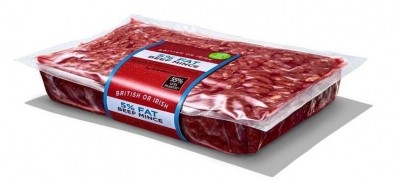'We can’t lose sight of the fact that packaging fulfils many vital functions': Food and beverage packaging innovation ‘at risk’

Packaging innovators need to juggle a wide range of sometimes contradictory and competing demands as they work to develop new approaches to food packaging. Sustainability and digitalisation often drive early discussions about food and beverage packaging evolution. However, according to Maria Spinetta, sector manager at Sagentia, failing to consider functionality, usability and consumer engagement upfront can hinder progress.
“Sustainability concerns have put packaging under the spotlight and the opportunities presented by digital technologies are very exciting. However, we can’t lose sight of the fact that packaging fulfils many vital functions,” Spinetta explained. “Any strategy to evolve product packaging needs to identify what matters most and set clear objectives from the outset. Otherwise, it’s easy to get side-tracked with a solution that may look promising but doesn’t deliver on core requirements.”
A complex and shifting regulatory environment adds to the challenge, Spinetta told this publication. “The UK/EU regulatory environment for food packaging is complex and there is likely to be a surge in regulation to deliver sustainability and circularity without compromising health protection. This can add further layers, tensions and uncertainty to innovators, but it can also act as a potential driver for innovation. Navigating regulation during innovation is certainly one of the major challenges and opportunities for companies across the supply chain in the food and beverage sector.”
So, when has well-intentioned innovation to tackle plastic use backfired? Spinetta pointed to examples of light weighing impacting logistics and resulting in a reduction in product layers per pallet; monomaterials being used to increase recyclability but can have inferior functionality – for example with regards to barrier properties or shelf life; while reducing the packaging size and packaging surface can also decrease the on-pack ‘communication space and engagement opportunities’.
How to introduce successful packaging innovation
The key to successfully innovating in pack design is to identifyall of the factors that need to be taken into consideration early in the innovation process. But even then, it can be difficult to know where to focus efforts when faced with mixed objectives and multiple avenues to explore, Spinetta noted. “For packaging innovation to deliver effective and cost-efficient outcomes, it’s important to think holistically,” she suggested.
The R&D consultancy has developed a three-stage assessment detailed in a free whitepaper on packaging innovation. It outlines steps to define the purpose of packaging, consider material and design choices, then reimagine end of life.
The packaging innovation assessment is comprehensive but encourages a ‘streamlined and focused approach’. It ensures important factors are accounted for so that the exploration of designs, materials, and opportunities for packaging reduction can be fully aligned with functionality requirements, consumer needs, and end of life factors such as reuse and recycling.
“We recommend engaging with consumers, materials suppliers, and waste management experts. Gaining insights from these different groups at an early stage in the process helps to refine objectives and it can also spark new ideas. Working in this way accelerates progress and increases the chances of landing on packaging solutions that satisfy multiple requirements,” Spinetta explained.
She told FoodNavigator that the consultancy is seeing an increasing trend towards closer collaboration in order to fuel packaging NPD. “We are increasingly working with global companies (suppliers and manufacturers), to help them navigate this journey, developing breakthrough concepts and supporting well-informed investment in innovation. We can see solution providers and product manufacturers collaborating to innovate (Pulpex and Kraft Heinz, for example), as well as competitors collaborating to reach common objectives. One example is the Flexible Packaging Initiative, where six competitors are working together to boost circular economy for flexible plastic packaging. Another one is Loop, where multiple manufacturers and retailers are coming together to boost reuse and refill models,” we were told.
But while collaboration might be increasing, Spinetta stressed that there is no one-size-fits all approach to solve the plastic packaging challenge. “The implementation of solutions will be different depending on the specific product characteristics, supply chains and distribution models,” the innovation expert stressed. “Questions like ‘what will my product look like in the future, what will the new packaging requirements be, can the product be innovated in a way that doesn’t require packaging?’ will be specific for each product and should also drive packaging innovation.”


















